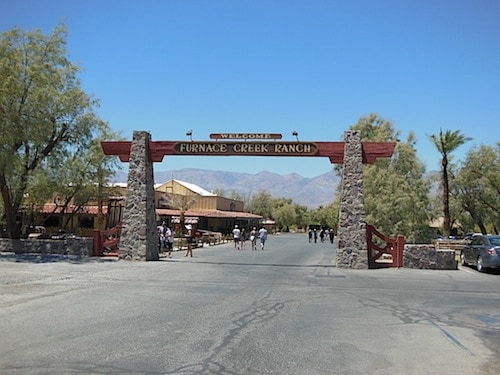
If you are in Las Vegas during the summer and need a break from the heat of the city and the craziness of the Strip, where do you go? Why to Death Valley, of course! I have long wanted to see Death Valley and to discover what made this place so famous, but I avoided it because I only seem to be in the Vegas area during the summer. In the past, the legendary heat kept me away, but this time I decided that I was going anyway. So on a day that was going to be at least 110 degrees Fahrenheit (43 degrees C) in Vegas, I headed to the driest, lowest, and hottest place in North America.
Driest, Lowest, and Hottest
I thought it might be best to travel with a small group since I didn’t have a car, and I did not feel that I had enough background knowledge to fully plan a day trip. Luckily, one tour company did offer summer trips to Death Valley, so without hesitation, I booked an excursion. On a very hot Sunday in late June, a group of 8 adventurous souls and our tour guide, Jennie, headed off into the Mohave Desert.
My only other foray into this area of the United States occurred two years ago when I took a trip from Las Vegas to the Grand Canyon. I can honestly say that I found the scenery of the Mohave Desert to be absolutely breathtaking. I enjoyed the vistas along every mile we traveled. Each mountain range and rock formation seemed to have its own unique shape and story. The scenery was unlike anything I have ever experienced where I live on the East Coast of the United States. The contrast between the starkness of the landscape and the majesticness of the mountain formations was awe-inspiring.

Red Rock Canyon
Our journey started by traveling over the Red Rock Canyon National Conservation Area to the town of Pahrump, Nevada. After this, we headed through the Ash Meadows National Wildlife Refuge to the town of Death Valley Junction and eventually into Death Valley National Park. I clearly noticed that as we drove closer to the park, there was less and less vegetation. I also began to notice flat areas covered with salt. To me, the landscape looked like I was on another planet.
Dante’s View
Our first stop within the National Park was a terrace lookout at 5,476 feet (1669 m) above sea level called Dante’s View. The road had many turns and became steep at the top, but the views were well worth the drive. From this height, we had a spectacular view of the southern Death Valley basin. It was a great way to begin our visit because it gave us a strong visual picture of the expansiveness of Death Valley and the starkness of the environment. We were also able to gain a perspective on the location of the places we would visit during our trip. In the distance, we saw the green clumps of vegetation found at Furnace Creek, the salt flats of the valley floor, and below us, the low point of Badwater Basin.
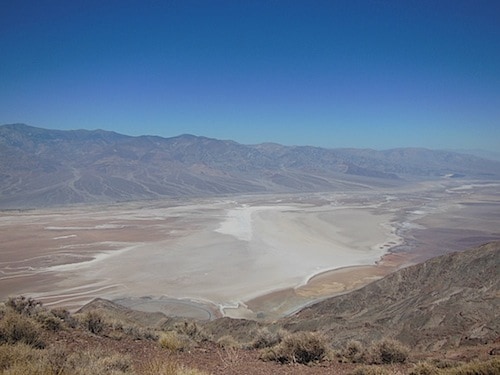
During our trip, our guide told many stories about the history of the Valley to help us understand what had occurred in the region during prehistoric times as well as the period when Timbisha Shoshone Indians settled in the area. She was a wealth of information, and we quickly became well versed in the borax mining operations and the transformation of the area into a National Park.
Zabriskie Point
Our next stop was Zabriskie Point, known for its unique landscape formed by erosional forces. I continued to be awed by the badlands landscape and the unique formations. I also became aware that there was a noticeable increase in temperature as we descended closer to the valley floor. We eventually made it to sea level and then headed below sea level to Furnace Creek Ranch. The ranch area has a visitor’s center, museum, lodging, campgrounds, and even a golf course (which claims to be the lowest in the world, at 214 feet below sea level). At the ranch, the thermometer read 120 degrees Fahrenheit (49 degrees C).
Undeterred by the heat, I had a refreshing lunch break outdoors, saw some relics of the Death Valley Railroad, took photos of an old borax ox cart wagon, and visited the Borax Museum.
All were interesting, but I was more intrigued by a golf course that is open year-round and looked to be in remarkably good condition considering the intense heat. I was also surprised by the number of visitors to Death Valley we had seen so far. I thought we might be the only tourists, but there were a fair number of other visitors. I suspect that the park never gets really crowded, and in many ways, this may have been a normal day.
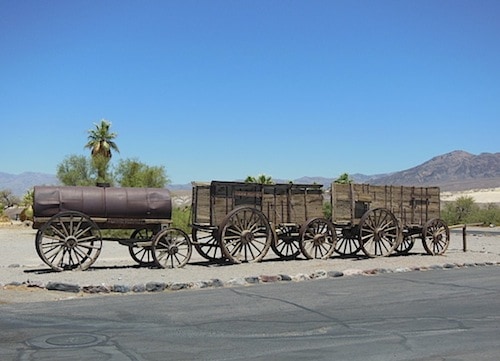
Devil’s Golf Course
After an hour’s break, we headed to the Devil’s Golf Course, a rough formation of halite salt crystals in the middle of the valley floor. When we first saw this area from the heights of Dante’s View, it appeared to be a very flat area of salt. I was shocked to find that the area was not flat but rather was a very rugged surface made up of salt rock. Apparently, it received its name from an early guidebook that declared “only a devil could play golf” here. The most fascinating thing to me was the way the landscape changed as we drove to the middle of the valley floor. Every area of Death Valley seems to have its own unique rock formations that were shaped by volcanic forces, water, and wind. I found every small area of this place to be fascinating.
Badwater Basin
Our next stop was Badwater Basin, the lowest elevation in North America at 282 feet (86 m) below sea level. There is actually a small spring-fed pool at Badwater Basin, but true to its name, the water is bad to drink. Newly built boardwalks allowed us to see the spring and to walk out to a very hard-packed salt flat. It was fascinating to look at a nearby cliff and see a sign far above that marked the location of sea level. This was the only time I felt bothered by the heat. I’m sure that the temperatures were well above 120 degrees at Badwater, and by this point, I felt light-headed and worn out. I was very happy to head back to our air-conditioned vehicle.
- Book Your Accommodation HERE
- Search for Great Tours HERE
- Get a Car Rental
- Buy Travel Insurance
- Log your park visits with a Passport To Your National Parks

This is not the first time I have experienced heat like this. A few years ago, I was in Marrakech, Morocco, during the summer when the temperature reached 122 degrees Fahrenheit (50 degrees Celsius). I live on the East Coast of the United States. Our summers seem hot, but temperatures only rise above 90 degrees for a few days during June, July, and August. They rarely get over 100 degrees. There is definitely a difference between the dry heat of the desert and the humid heat of the East Coast of the United States. How do the comfort levels compare? It was hot in Death Valley, 120 degrees with or without humidity is hot, but it was not necessarily uncomfortable. Our humid and hot weather is often uncomfortable. Given a choice between dry heat and humid heat, I prefer dry heat. But 120 degrees falls into the danger zone, and I was careful to limit my exposure during my visit to Death Valley.
Artist’s Drive
Our trip was not over, and the last part was as fascinating as the first part. We drove along a paved single-lane road called the Artist’s Drive that took us to the top of an alluvial fan, a cone-shaped deposit of sediment, on the east side of Death Valley. Our destination was an outcropping named the Artist’s Palette because of the different hues found in the rocks. The oxidation of the metal in the rock created a colorful and masterful example of the beauty of nature. Some of our group climbed over to the colorful rocks, but I climbed upward to get a panoramic view of the Artist’s Palette and the eroded wash channels that are found in the area. I simply wanted to find a high place where, by myself, I could enjoy one last view of the vastness and sheer beauty of the place.
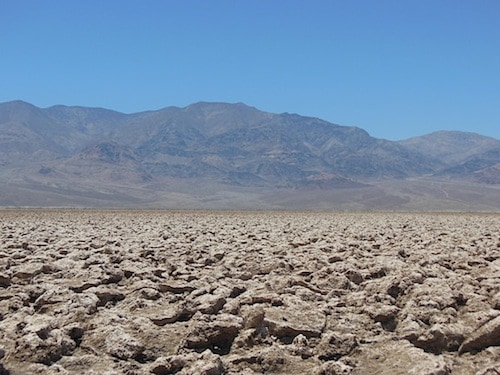
I had seen so much beyond what I could have imagined, but I still wanted to see more. Unfortunately, that would have to wait for another day. It was time to head back to the noise and lights of Vegas. I made a mental list that next time I would visit the dunes of Stovepipe Wells, Scotty’s Castle, the Ubehebe Crater, the Rhyolite Ghost Town, and hopefully the Racetrack Playa (home to the mysterious moving rocks of Death Valley).
Conclusion
If you have the opportunity to see Death Valley, do not pass it up. Take a tour or drive yourself, but be sure to schedule ample time to see all the natural beauty. If it is a hot summer day, don’t let the high temperatures deter you; just be realistic about what you can accomplish. The beauty you will enjoy will far surpass any discomfort the heat may provide. At the very least, you’ll be able to claim bragging rights about enduring hotter temperatures than any of your family or friends.
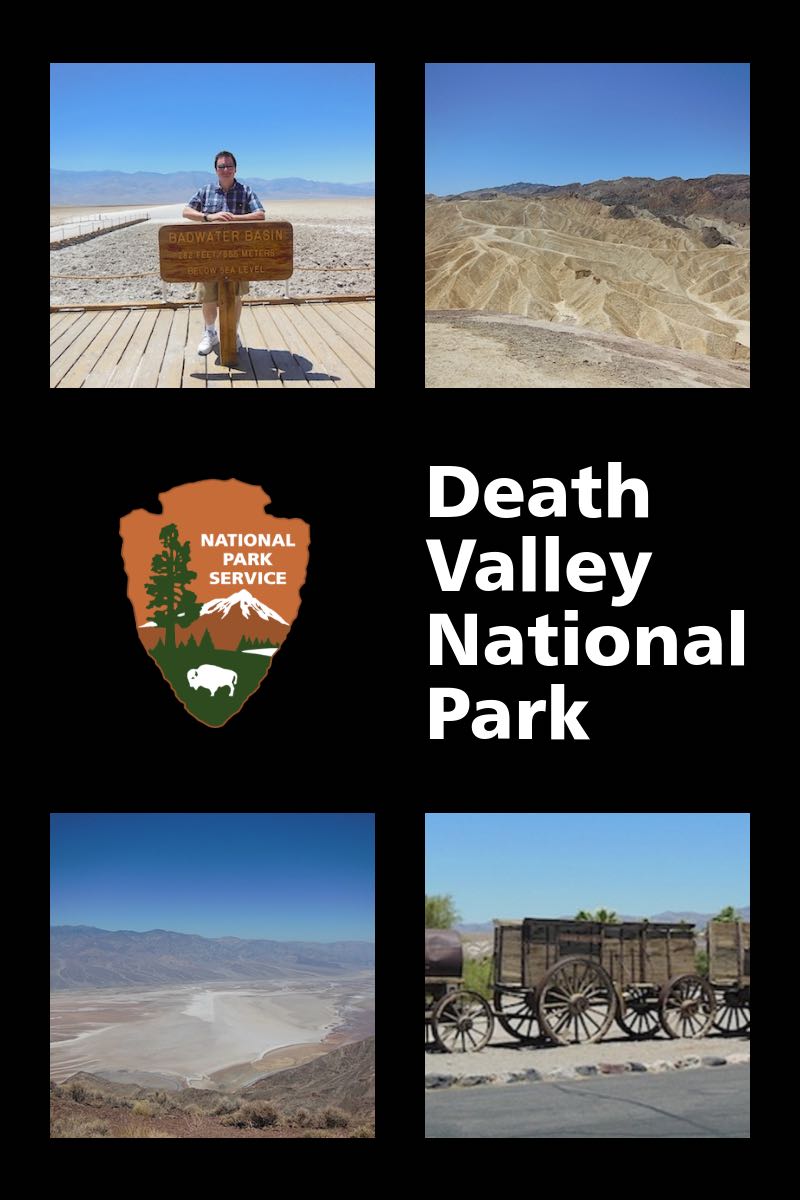
Leave a Reply
Tags: death valley, national park

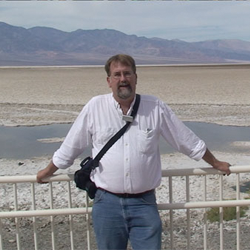 Death Valley National Park – Amateur Traveler Video #77
Death Valley National Park – Amateur Traveler Video #77 Joshua Tree Rock Climbing – Rock Climber’s Guide to Joshua Tree National Park
Joshua Tree Rock Climbing – Rock Climber’s Guide to Joshua Tree National Park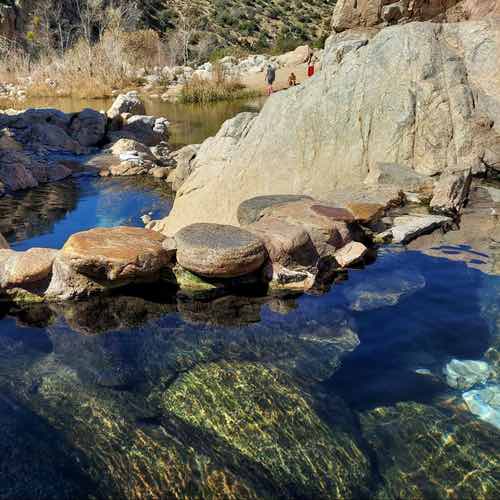 3 days Exploring Southern California’s Hot Springs
3 days Exploring Southern California’s Hot Springs
